Notes from the Field: A Growers Perspective – Ben Kraus Chat #8
Welcome back to our ninth report of 2025 Notes from the Field! As a reminder, this year’s Notes from the Field will follow Ben Kraus with Gwenyn Hill Farm (Waukesha). The goal of this newsletter is to hear from the grower’s perspective and foster connection between fruit growers. We’ll be focusing our discussions on phenology/fruit development and integrated pest management. This week, Ben is wrapping up currant harvest, doing a first pick of Duchess of Oldenberg apples and is continuing day neutral strawberry and raspberry harvest. The majority of fruit picked are available at Gwenyn Hill’s on-site farm stand. As for pest management, Ben is continuing to monitor for codling moth and apple maggot in tree fruit, and is keeping an eye out for summer diseases in tree fruit and grapes.
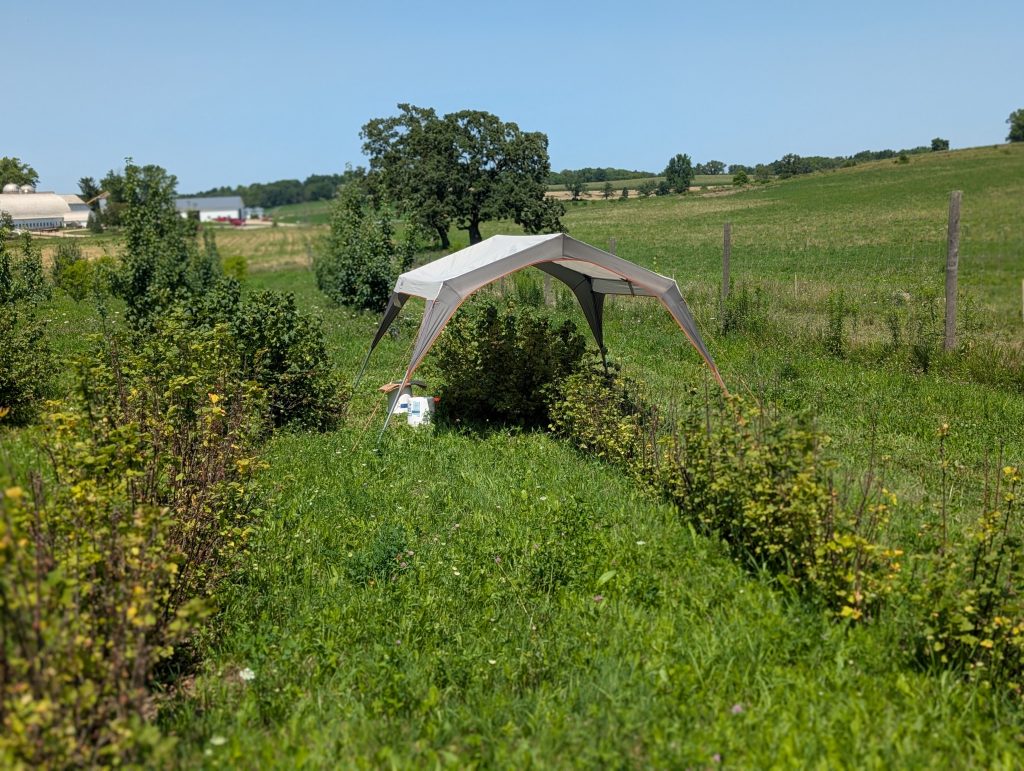
I met with Ben on Monday, July 28th for a walk through the orchard. As a reminder, Gwenyn Hill has a 4-acre block of tree fruit and berries that sits along a north-facing slope, and ~150 table grape vines bordered by saskatoons and rhubarb across the road. Weather over the past ~two weeks (July 15 – July 28) has continued to be hot and humid, with spots of rain. According to NEWA, Gwenyn Hill had an average high temperature of 82.0℉, average low temperature of 63.0℉, and a total of 1.48” of precipitation (NEWA – Colgate, WI).
Note: Gwenyn Hill is impacted by the “lake effect” from Lake Michigan and is slightly behind in terms of phenology, compared to other southern WI locations.
*INSERT FRUIT PHENOLOGY PHOTOS HERE
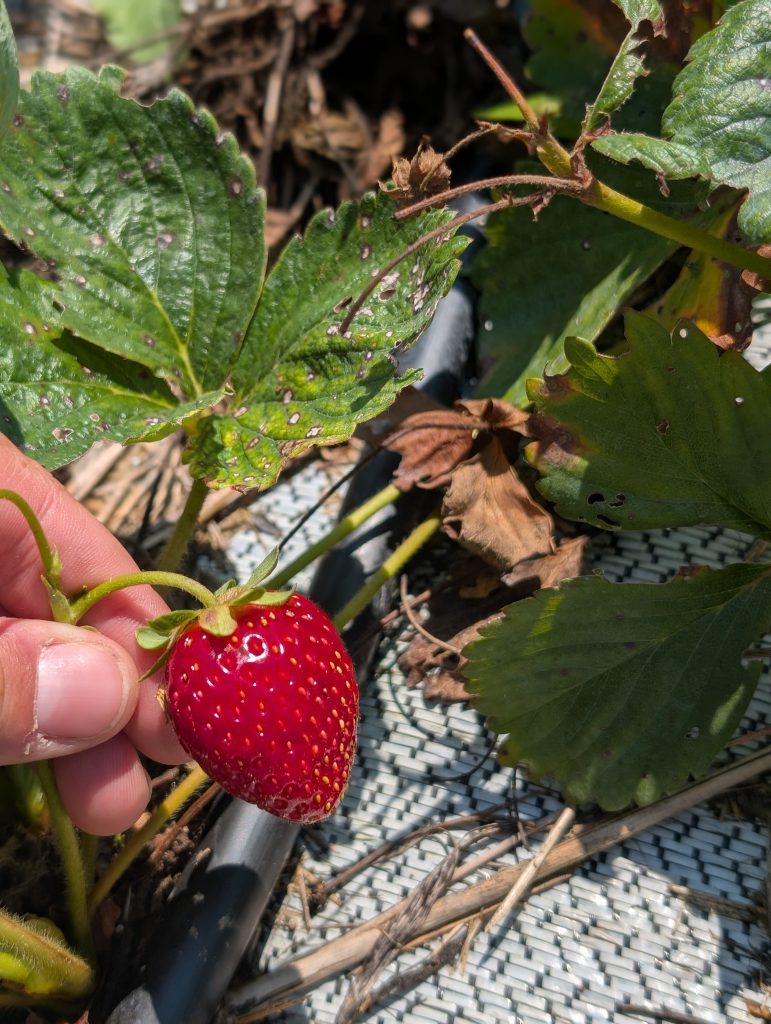
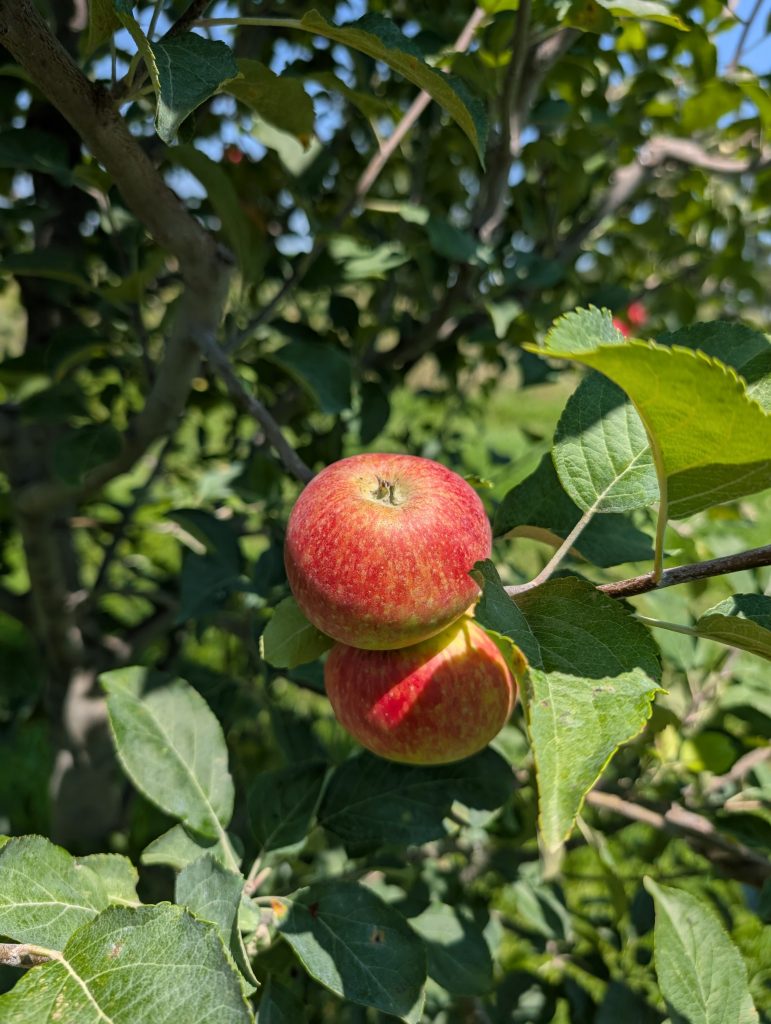
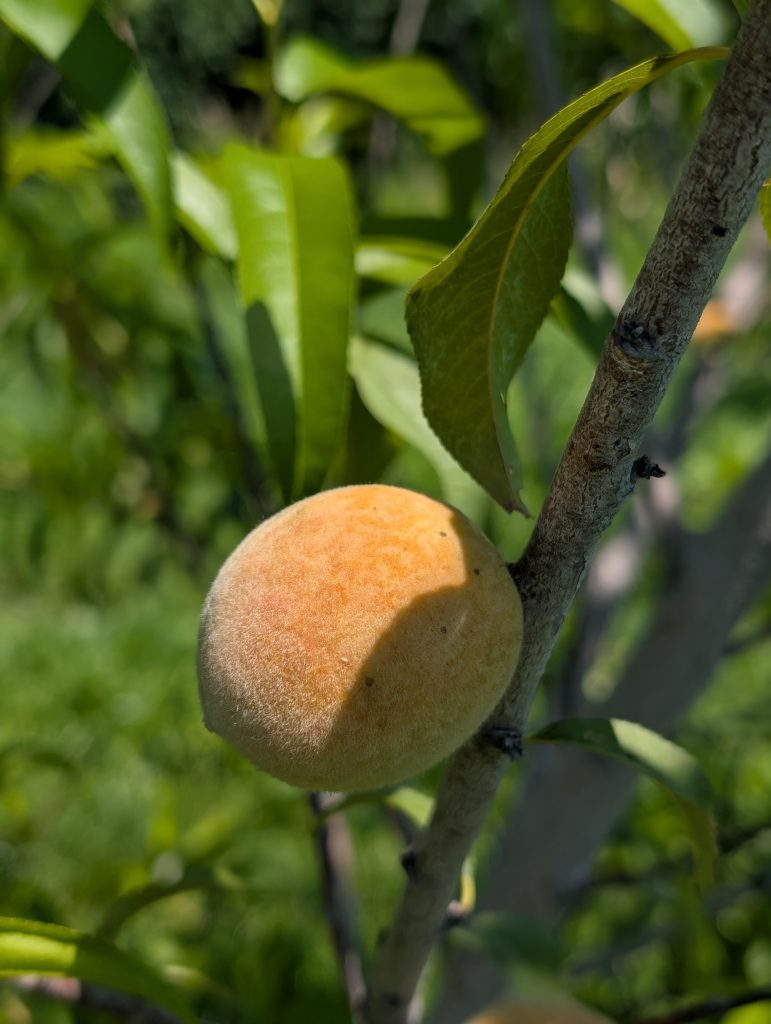
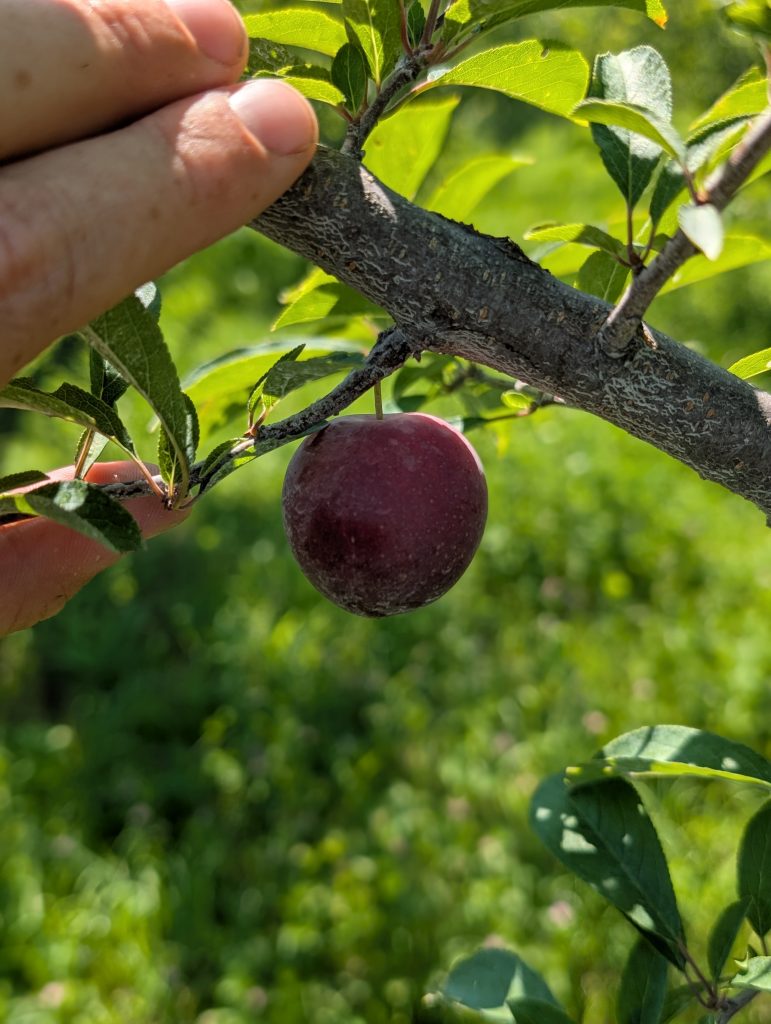
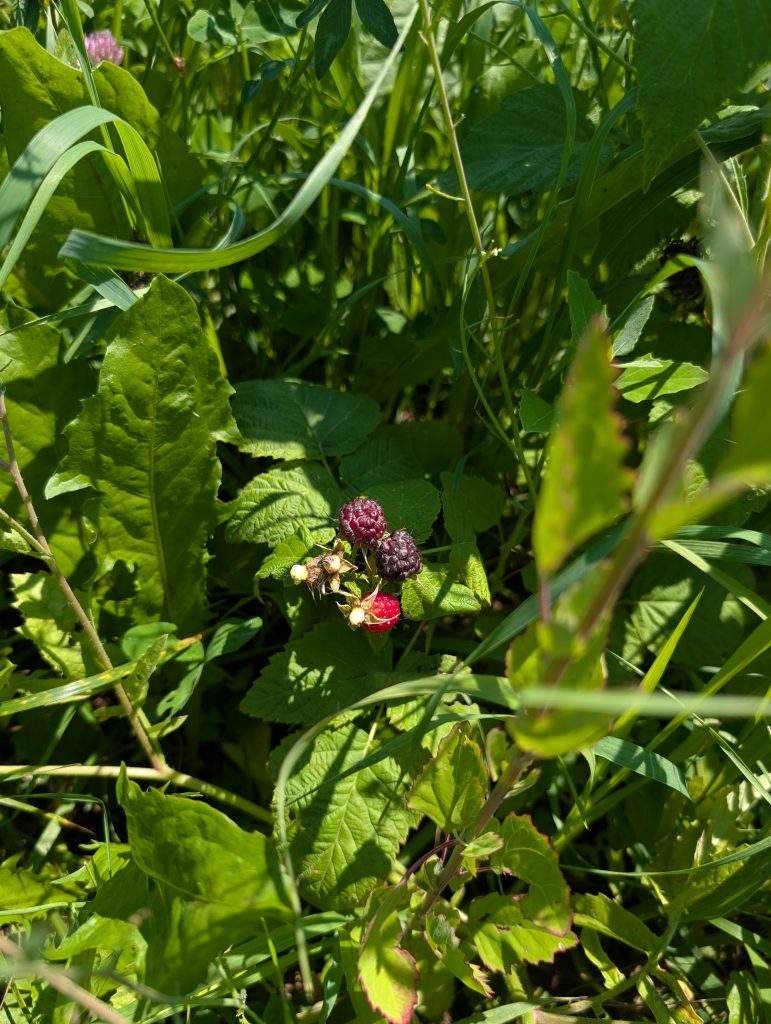
For disease management, Ben plans to continue using Potassium Bicarbonate and LifeGard WG (Bacillus mycoides isolate J) as needed for summer tree fruit diseases like sooty blotch and flyspeck and bitter rot. Bitter rot begins as a small, dark, circular lesion on the skin of the fruit, and expands into a “bullseye” pattern as the infection develops. Often, bitter rot-diseased fruit will rot on the tree or fall to the ground and release volatiles (scent) that attracts other insects like wasps and flies. Sooty blotch and flyspeck are two different fungal diseases in apple and pear that are often observed together in mid to late-summer. Sooty blotch appears as olive-green to dull-black smudgy blemishes, and flyspeck appears as a grouping of pin-point sized black dots. Both diseases typically do not cause significant fruit damage and are safe to eat!
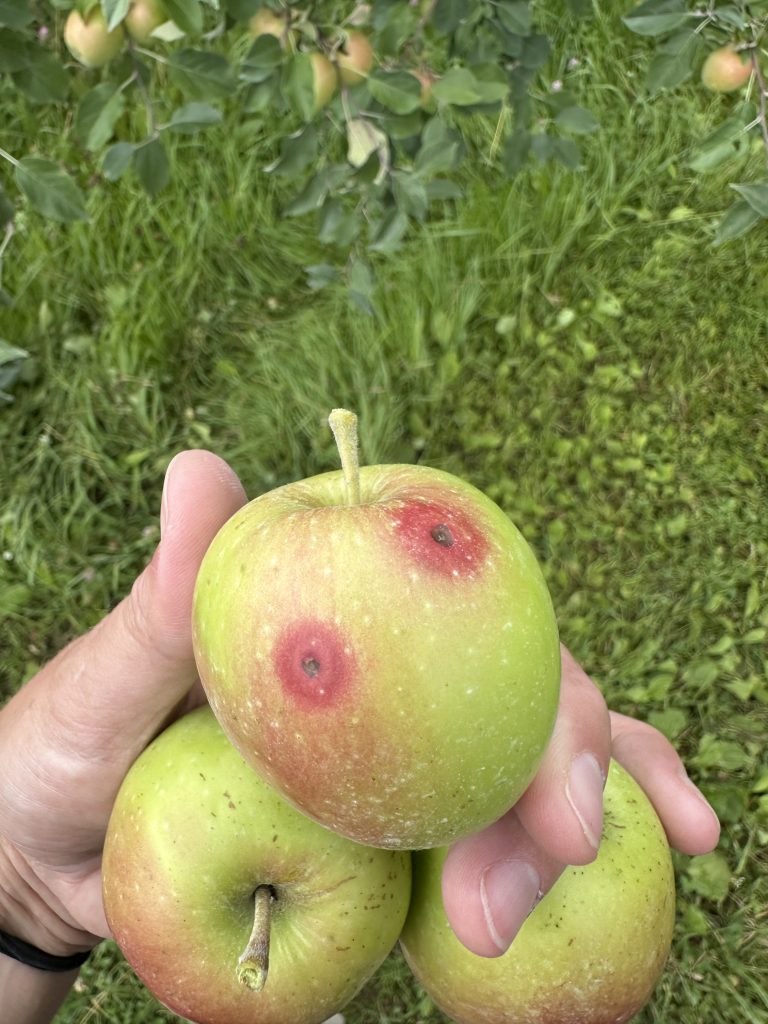
Ben is continuing to monitor apple maggot red sphere traps around the perimeter of the orchard, with zero catches so far this season. Ben plans on using Venerate XC (Heat-killed Burkholderia spp. strain A396) a bio-insecticide, to target any building apple maggot populations.
Japanese beetle have retreated (for now), and Ben plans to use insect netting on grapes and Pyganic (pyrethrins) as a spot spray for heavily infested vines and trees. Japanese beetle “skeletonize” leaves of over 350 host plants, though have a preference for grapes, crabapple, purple-leaf plum, birch, Japanese and Norway maple, rose, mountain ash, linden and basil.
Ben has captured a few more second generation codling moth, since the first capture on Saturday July 13. He will continue using Cyd-X (Cydia pomonella granulovirus) for any further codling moth control.
Note: Several factors determine the threshold for biofix, including size and elevation within the orchard, type of pheromone lure used, and if mating disruption is used.
That’s all for this week’s Notes from the Field. Good luck and best wishes to all WI Fruit Growers over the next two weeks!
This article series is NOT intended to be prescriptive for other orchards. It is simply an opportunity for our readership to hear from other growers about their experiences growing fruit crops in Wisconsin.
Growing the same crop does not always justify the same practices. Management decisions at your farm should be tailored to your operation and consider location, regional climate, disease and pest history of your vineyard, and your varieties.
The mention of a product is NOT an endorsement. Always follow the instructions on product labels and consult weather stations (ex. NEWA) in your area for current weather forecast and disease and pest prediction models.
This article was posted in Notes from the Field and tagged Ben Kraus, Josie Dillon, Notes from the Field.
